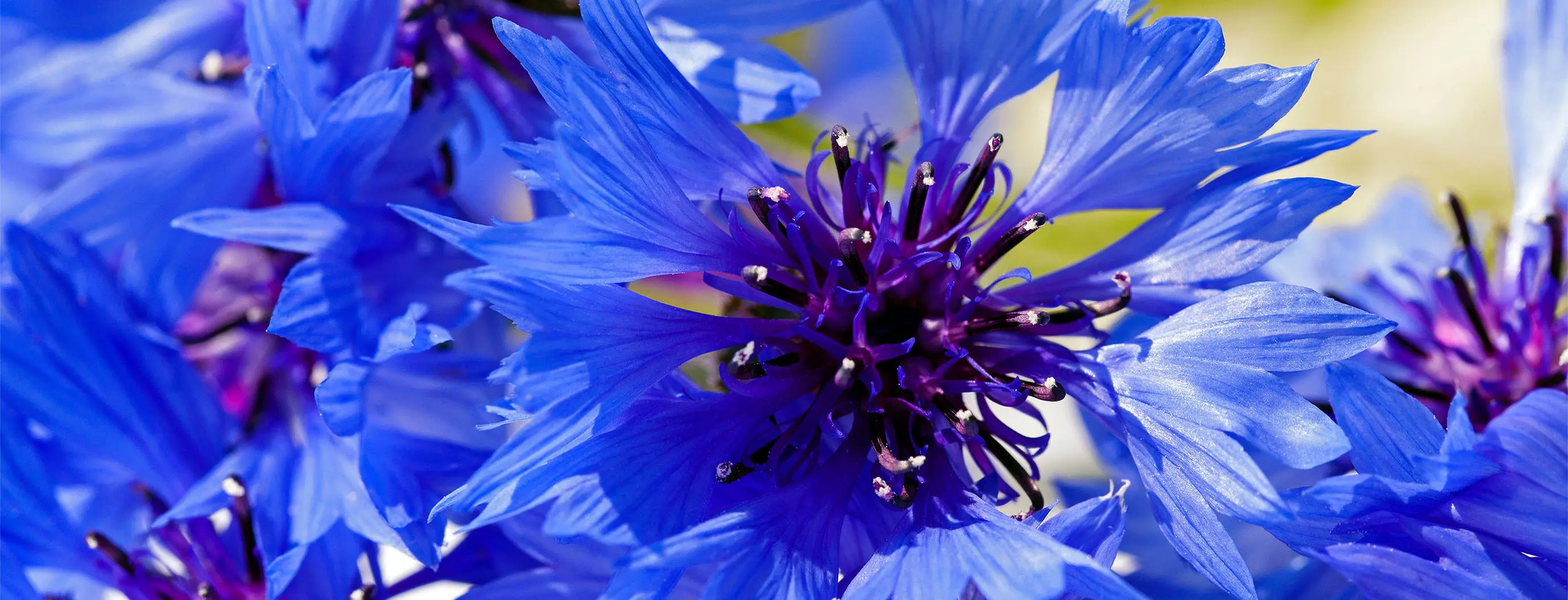ZHAW researchers find the key to the simplified production of plant pigments
Anthocyanins are responsible for the red, purple or blue colouring found in most flowers, fruits and autumn leaves. Although the natural production of these plant pigments has been the subject of research for some time, it had previously not been possible to produce them in a cell factory setting. A team of ZHAW researchers has now uncovered a crucial step in the biosynthesis of anthocyanins that had been hitherto unknown. The results of their work have been published in the renowned journal Nature Catalysis.

Anthocyanins (Greek: “anthos” (flower) and “kyanos” (blue)) are found abundantly in nature. The industrial use of anthocyanins currently involves their extraction from plants naturally rich in these compounds, including purple sweet potatoes, black carrots and red cabbage. However, these processes are unsustainable and also dependent on the availability of the raw materials. Being able to produce anthocyanins directly in a laboratory environment would therefore save resources.
Plants produce anthocyanins with enzymes. These are proteins that are responsible for many vital reactions in living organisms. For the production of anthocyanins, the enzymes are interlinked in a reaction cascade. This is somewhat reminiscent of a production line you may find in the automotive industry and is referred to as a biosynthetic pathway. The industrial sector incorporates relevant biosynthetic pathways into microorganisms that are easy to cultivate, making use of the resulting cell factories to produce, for example, ingredients for medicines, vaccines or cosmetics. These products are difficult to manufacture using chemical procedures.
ZHAW researchers decipher a hidden synthesis step
Until now, it had not been possible to produce anthocyanins in cell factories. This was despite the fact that it was assumed that all of the enzymes involved in the synthesis process had already been deciphered. In the research project now published in Nature Catalysis, a team headed up by Rebecca Buller at the ZHAW Institute of Chemistry and Biotechnology became the first to decipher a synthesis step that had been overlooked until now. The researchers made the groundbreaking discovery that the enzyme “anthocyanin-related glutathione transferase,” which was previously thought to be a transfer protein, is also catalytically involved in the biosynthesis process. This enzyme brings about the transformation of the second-to-last intermediate product through so-called dehydration, thus producing the anthocyanin pigments, which are subsequently stabilised by linking them with a sugar molecule.
Baker’s yeast as a cell factory for dye production
As the penultimate biosynthesis step had never been fully understood until now, it had not been possible to build cell factories for the industrial production of plant pigments. Rebecca Buller's research team utilised its newly acquired knowledge to set up a baker’s yeast cell factory for the production of anthocyanins in which they incorporated the missing enzyme “anthocyanin-related glutathione transferase.” Starting with the simple sugar glucose, this led to a more than 35-fold increase in anthocyanin production compared to cell factories that didn’t contain the essential enzyme. This breakthrough means that the industrial production of the pigments in cell factories is now within reach.
Anthocyanins are useful as sustainable dyes and foods
The research results gleaned by the scientists could have an impact on the breeding of industrial and ornamental plants. These findings will now pave the way for the future industrial-scale production of anthocyanins in biofactories and likewise provide the basis for their use as sustainable dyes, among other things. Thanks to their various positive health effects, plant pigments are also in much demand as bioactive substances in the food, cosmetics and nutraceutical industries.
Downloads
- Media release “ZHAW researchers find the key to the simplified production of plant pigments”(PDF 87,0 KB)
- Image 1: Anthocyanins are responsible for the red, purple or blue colouring of most flowers, fruits and autumn leaves. Rebecca Buller and her team succeeded in demonstrating that the enzyme “anthocyanin-related glutathione transferases,” which was previously thought to be a transfer protein, catalyses a key step in the biosynthesis of the pigments. Graphic © ZHAW/Eichenberger, M., Schwander, T., Hüppi, S. et al.
- Image 2: Rebecca Buller and her team are establishing biosynthetic and biocatalytic processes in their laboratories for the sustainable production of small molecules. The professor is Head of the Centre for Biocatalysis at the ZHAW. Photo © ZHAW/Conradin Frei
- Image 3: Working in collaboration with Dr Michael Eichenberger, Dr Thomas Schwander incorporated the completed biosynthesis pathway into baker's yeast. The cell factories registered a 35-fold increase in anthocyanin production relative to the baker’s yeast strain that did not contain the essential enzyme. Photo © ZHAW/Brüderli
Specialist contact
- Rebecca Buller, Head of the Centre for Biocatalysis and Process Technology, Institute of Chemistry and Biotechnology, ZHAW Wädenswil. 058 934 54 93, rebecca.buller@zhaw.ch
- Centre for Biocatalysis
Media contact
- Beatrice Huber, Media Relations, ZHAW School of Life Sciences and Facility Management, Wädenswil. 058 934 53 66, beatrice.huber@zhaw.ch
Source